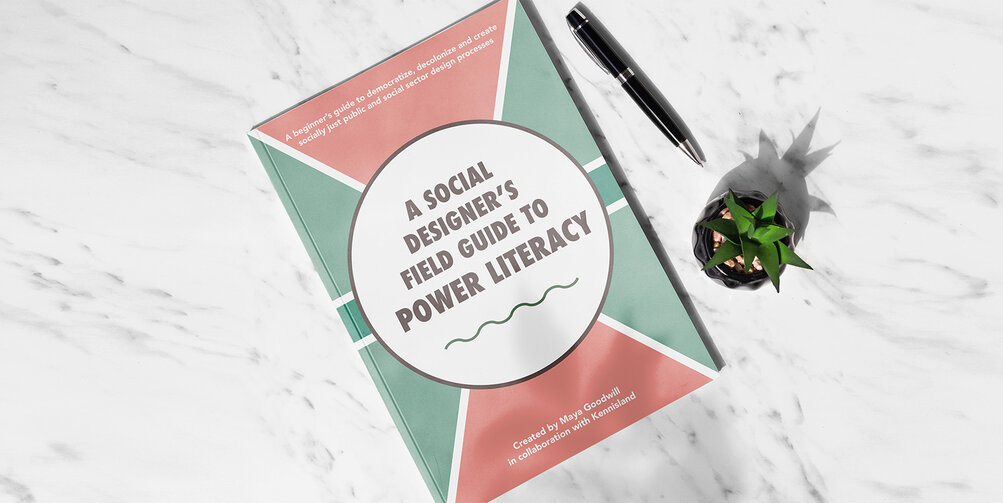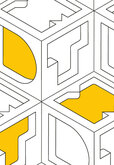-
Heb je nog geen vragen, maar wel interesse in Gezondheid en zorg?
Samen vernieuwen.
A Social Designer’s Field Guide to Power Literacy

A Social Designer’s Field Guide to Power Literacy was created by Maya Goodwill, a design researcher and facilitator, in collaboration with Kennisland as a part of her MSc in Design for Interaction++Design for InteractionThe Design for Interaction programme at Delft University of Technology exists to educate designers who understand what people do with and expect from the products they use in everyday life, and who are able to design ‘products’ appropriate to their needs’ concerns and abilities. Read more
. Maya started her research because of a perceived gap in the design field when it comes to addressing power, privilege and oppression. Over a period of six months, Kennisland welcomed Maya into the organisation as she conducted research to better understand the way that power and systemic oppression shows up in our own work, as well as in the work of other social designers and researchers in the field. As a result of her research she designed the field guide: an invitation for practitioners, including Kennislanders, to get started on their ‘social justice journey.’
The field guide is designed as an entry point to the hard work of challenging the interlocking systems of oppression (e.g. colonialism, white supremacy, heteropatriarchy, etc.) that many of us have internalised and continue to reproduce in our design practices. It aims to support designers, facilitators, researchers and other practitioners working in the social and public sector to become more aware of power dynamics in our work, while motivating us to challenge existing inequities by giving up some of our own power.The field guide aims to support designers, facilitators, researchers and other practitioners working in the social and public sector to become more aware of power dynamics in our work, while motivating us to challenge existing inequities by giving up some of our own power. The field guide pushes us to move beyond our ‘good intentions’, and instead focus on the impacts of the design process, especially for those who are most marginalised. In doing so, the hope is that we can harness our own power to create participatory processes that are truly decolonial, democratic and equitable.
Aligning impact with intentions: field guide worksheets
The field guide includes an introduction to power literacy as well as a number of worksheet activities to help designers reflect on power in our own work.
Part one of the field guide includes five worksheets to be completed individually and to then discuss in a group. These worksheets will prompt the designer to reflect on the distribution of power in a past design project, and whether its impact aligned with their intentions. The worksheets may bring about uncomfortable or uneasy feelings: this is a necessary part of the work. The worksheets inside will prompt the designer to reflect on the distribution of power in a past design project, and whether its impact aligned with their intentions. The worksheets may bring about uncomfortable or uneasy feelings: this is a necessary part of the work.
Part two builds on part one by encouraging designers to put what they have learnt into action in their next design project. This section introduces the concept of power checks, moments throughout the design process to slow down and reflect on how power is showing up in design decisions and the potential impact on marginalised stakeholders. Included in the field guide are four power check worksheets to fill out at different points in the project process: set-up, divergence, convergence and wrap-up.
Closer to home
Many of our team at Kennisland have worked with Maya throughout the prototyping process of the field guide. We have had some first lively discussions and the worksheets have already sparked a number of ‘aha’ moments and deep internal reflection.The field guide has already sparked a number of ‘aha’ moments and deep internal reflection within Kennisland. The next step will be to further integrate the field guide into our research and design processes to ensure that we are holding ourselves accountable to challenge (rather than reproduce) inequity and oppression in all of our projects. We also aim to translate the field guide to Dutch.
Kennisland is convinced A Social Designer’s Field Guide to Power Literacy is a valuable, well-developed and necessary resource for anyone working in ‘design’ processes in social innovation, social change and/or the public or social sector. The field guide is available for anyone to use, and can be downloaded for free. If you are interested in learning more, reach out to Maya at goodwill.maya@gmail.com.




